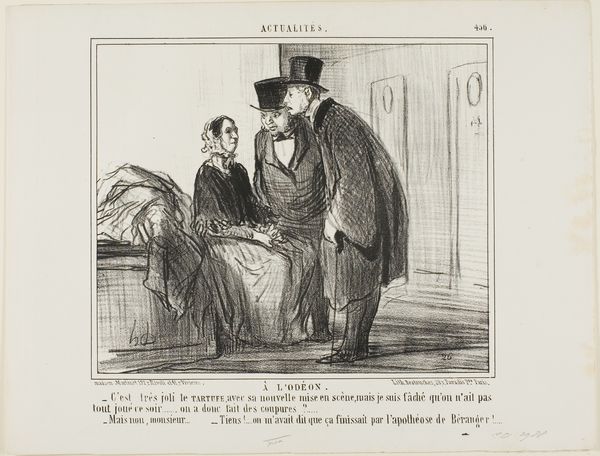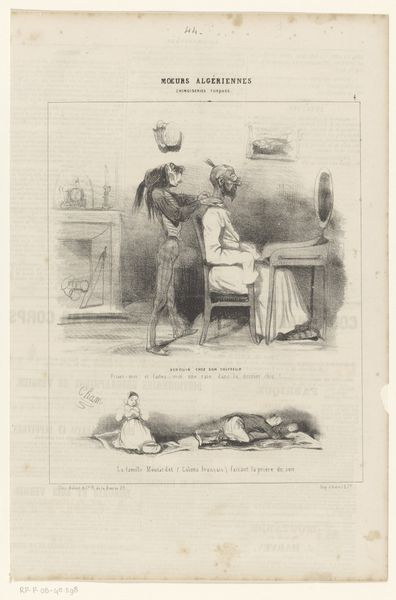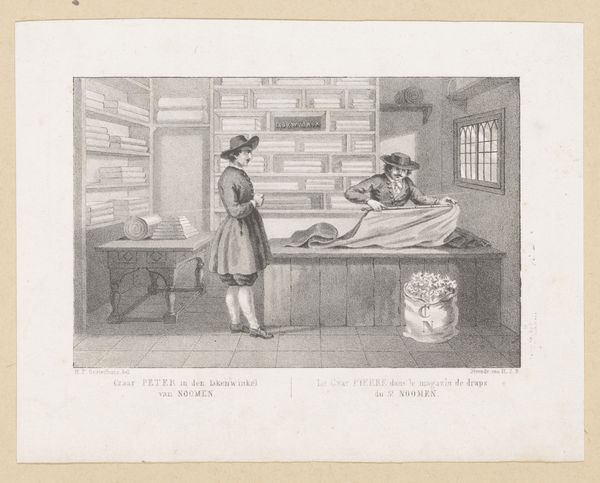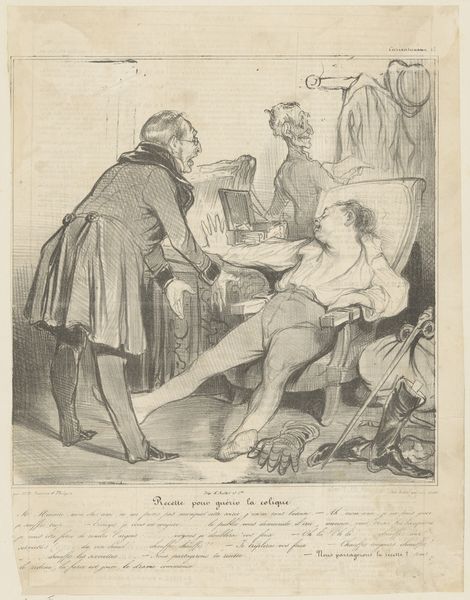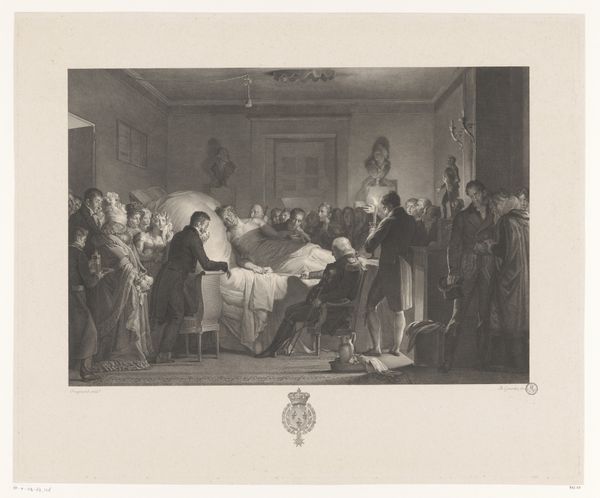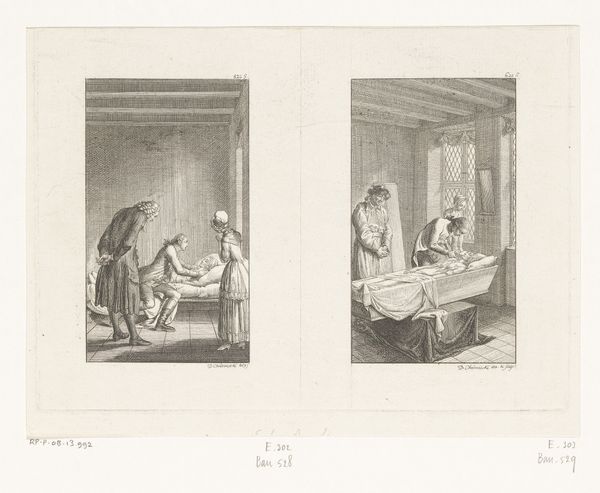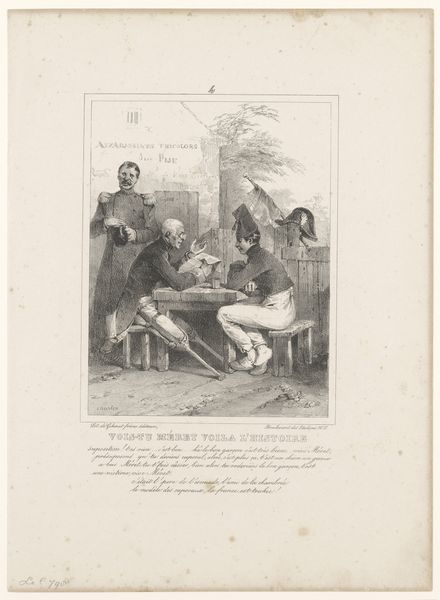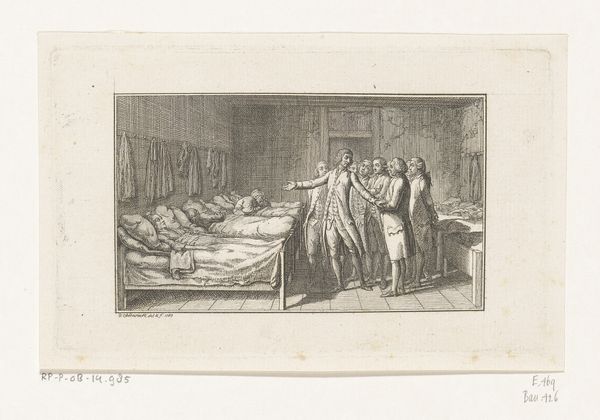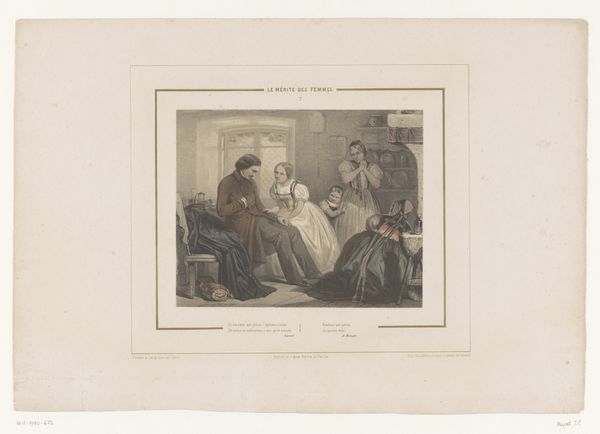
Franse artsen buigen zich over de stervende Mazet before 1833
0:00
0:00
drawing, lithograph, print, paper, ink
#
drawing
#
narrative-art
#
lithograph
# print
#
figuration
#
paper
#
ink
#
romanticism
#
line
#
genre-painting
#
history-painting
#
academic-art
#
realism
Dimensions: height 210 mm, width 266 mm
Copyright: Rijks Museum: Open Domain
Editor: This lithograph, "Franse artsen buigen zich over de stervende Mazet," which roughly translates to "French Doctors Gather Around the Dying Mazet," was made by Charles Abraham Chasselat sometime before 1833. It’s a pretty stark scene. Everyone looks distraught. What captures your attention most about this image? Curator: It's a powerful image, isn't it? Almost theatrical. The artist captures that very moment of… resignation, perhaps? Everyone frozen in their roles - the concerned doctors, the grieving family, the dying man himself, caught in this suspended animation between life and death. Look at the composition—it’s staged almost like a play. And it gives me the shivers – which is odd because there’s so much life in this death scene! Do you see that too? Editor: I hadn't really considered that tension. All the drama makes it seem so Romantic, you know? With a capital ‘R.’ All that emotional intensity crammed into a single room. What do you make of the almost obsessive level of detail? Curator: Yes, and doesn't the precise line work of the lithograph only amplify the chaos, paradoxically? It's like trying to make sense of the nonsensical – to give death a shape, a story. I love how Chasselat isn’t afraid to fill every corner of the image with texture and feeling; even the wallpaper has a story to tell, doesn’t it? The details make you wonder: what exactly was Mazet to these people? What did they believe they were losing? It leaves you feeling quite haunted, doesn’t it? Editor: Totally. I went in expecting it to feel morose but seeing that tension gives me a lot to think about. Curator: Absolutely, it’s that kind of paradox – that wrestling with the unspeakable – that keeps these historical narratives alive.
Comments
No comments
Be the first to comment and join the conversation on the ultimate creative platform.
